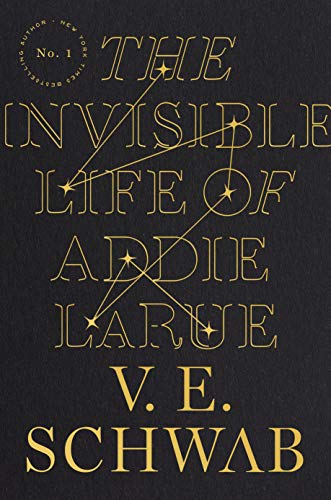The Invisible Life of Addie LaRue is a wonder, a timeless menagerie of characters and settings, longing and hope, strength and resilience in a narrative that spins endlessly from Paris to New York and back again. I was swept away by V.E. Schwab’s deft use of language and interwoven timelines, her careful care with handling the loneliness and longing of Addie. A book like this one can draw out a complex critique, breaking down the artistry and technical skill of such a book and there’s room for that in most reviews. But for me, I’m just in awe of the simple pleasure of reading about the world through Addie’s eyes.

I went into the book knowing very little. V.E. Schwab is a New York Times bestselling novelist, and her books have a bit of a cult following. Anyone whose words inspire cosplay and tattoos, fanfiction and fanart is bound to inspire buzz, and the buzz for The Invisible Life of Addie LaRue was like the incoming of a swarm of bees. I think knowing very little going in added to the magic of it all, but for those of you who enjoy a little plot before a rave review, here it goes:
Addie LaRue is a remarkable young girl who cannot stand a stationary life. She was born in a small river village in France in the 16th century and can imagine nothing worse than dying in the same town, having lived in the blink of an eye. And so she prays to the gods that Estele, a woman who nurtured her wildness, believed in. And desperate for a change in her fate, she prays at dusk, and the darkness answers. Practically feral with her desire to be free from an unwanted marriage, she strikes a deal and gives her life to the darkness. But instead of freedom, she gains a curse. No one, not even her family, will remember her. When she is out of sight, she is out of mind. She can make no mark on the world. For over three-hundred years she exists, listless, living day by day to spite the darkness. She travels across continents without a home, unable to share her story or even her name. In twenty-first century New York City, she finally meets someone who remembers her, and he too is drawn to her for her effect (or is it a lack of) he has on her.
Like The Starless Sea by Erin Morgenstern and The Thousand Doors of January by Alix E. Harrow, this book has become an instantly beloved classic, earning a special spot on my shelves. I’ve never been a fast reader, but I almost think I didn’t savor Addie. I could have easily lingered on each phrase over the course of the 400-page book because every one of them are strung together in the most breathtaking piece of art. I know this is a book every writer will study, for the way Addie—a lonely, unlucky girl lost to time and memory—unravels for us, as we discover history and the spaces that she can never make an impression alongside her.
It is hard not to feel loss when you read about her. Hard not to take her grief as your own. I’ve always been a reader who takes the book too seriously, who becomes a bit of the character as I read. But I also marveled in Addie’s defiance to the dark and her joie de vivre. And every person she encounters along her 300+ years long journey is a character I would also want to linger on—I can imagine and feel an ache for all the stories we’ll never encounter of Samantha Benning, James LaCroix or Remy Laurent. Also too, though it deserves paragraphs of praise and more thought than just this: I admire and appreciate the way that Henry and Addie are bisexual, with little comment on it, and comfortable with their identities and the identities of those around them. It was refreshing to read.
The crime of this book is that it evokes so well the longing of places and people that cannot exist at the moment. In scenes set in 2014, I cringed while reading about characters packing into a club or playing games in an arcade speakeasy, so close to other people that I felt the longing that courses so acutely through the book. And as I read, the longing grew. I so wished I could meander down a cobblestone city side-street and pop into a coffee shop to read a chapter or two. Or that the book can be a constant companion as I travel from bakery to bakery across Paris or while I wait in a museum cafe in London.
If you’re a writer, you’ll find yourself marveling over the callbacks and details—imagery and symbols that act as through-line. I wish that one day I can write as well as Schwab—that my novel can be a breath of fresh air in a smoke-choked present. The Invisible Life of Addie LaRue is a book I’ll revisit again and again, whether by flipping through the pages and discovering the story again or because I’ll be struck by a moment or detail and I imagine that will be the same for most readers. In fact, I will delight in reading other thoughts on Addie and Henry, Luc and Addie’s New York, her Paris. We might even all agree that Addie’s story is truly unforgettable.
Advertisement
Advertisement







